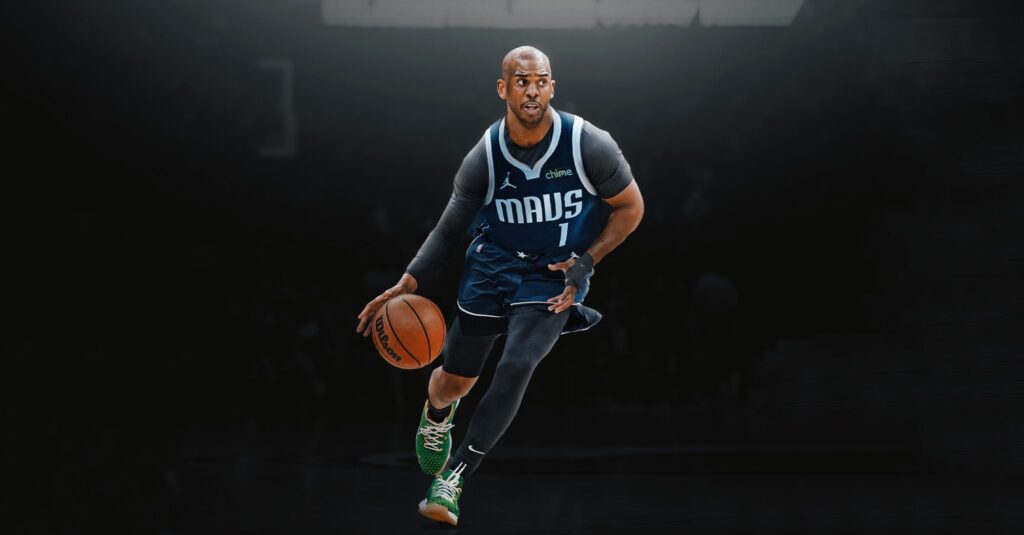MADISON, Wis. — Bo Ryan was on the phone last week in the middle of yet another answer-turned-story spanning the decades of his life when he began waxing poetic about the two seasons when he was the boys basketball coach at Sun Valley High School in Aston, Pa. It wasn’t a particularly glamorous existence but one that fortified in his mind why he was on the right career path.
His previous job as an assistant coach under Bill Cofield at Dominican College of Racine (Wis.) had ended because the school closed down. So, Ryan returned to Delaware County, where he grew up and starred as a basketball player at Chester, for the 1974-75 school year. Only this time, he was coaching at a rival school that powerhouse Chester traditionally hammered.
“They had beaten Sun Valley by I don’t even want to get into how bad the scores were,” Ryan said. “But in the two years that I was there, our guys put up a fight, and they went toe-to-toe and lost by I think nine one game and 12 another. Those were definitely years where I said, ‘You know, this is fun.’”
By the time Ryan reunited with Cofield in 1976 as an assistant under him at the University of Wisconsin, Ryan had earned conference coach of the year honors and left Sun Valley in a better place than where he found it. It would become one of the hallmarks of Ryan’s remarkable career, which featured success at every level in which he coached.
Ryan’s list of achievements is lengthy. He spent 32 seasons as a college head coach before retiring in December 2015. Ryan finished with a record of 747-233 (a .762 winning percentage). He won four Division III national championships at UW-Platteville, and during his final five seasons there, his teams compiled an extraordinary record of 161-8. No NCAA men’s basketball program in any division had a better winning percentage in the 1990s than Ryan’s Platteville teams (.908).
Ryan moved up in 1999 to Division I to coach at Milwaukee, where he led the Panthers to back-to-back winning seasons for the first time in eight years. What followed were 14-plus seasons at Wisconsin that further cemented his coaching legacy. He went 364-130 (a .737 percentage) to become the winningest coach in program history and secure the best winning percentage among any Big Ten coach while earning league coach of the year honors four times. Ryan’s teams qualified for the NCAA Tournament all 14 seasons, reached seven Sweet 16s and two Final Fours, won four Big Ten regular-season titles and three conference tournament championships and never finished worse than fourth place in the Big Ten regular season.
Bo Ryan’s Division I record
| Season | School | Record |
|---|---|---|
|
1999-00 |
Milwaukee |
15-14 |
|
2000-01 |
Milwaukee |
15-13 |
|
2001-02 |
Wisconsin |
19-13 |
|
2002-03 |
Wisconsin |
24-8 |
|
2003-04 |
Wisconsin |
25-7 |
|
2004-05 |
Wisconsin |
25-9 |
|
2005-06 |
Wisconsin |
19-12 |
|
2006-07 |
Wisconsin |
30-6 |
|
2007-08 |
Wisconsin |
31-5 |
|
2008-09 |
Wisconsin |
20-13 |
|
2009-10 |
Wisconsin |
24-9 |
|
2010-11 |
Wisconsin |
25-9 |
|
2011-12 |
Wisconsin |
26-10 |
|
2012-13 |
Wisconsin |
23-12 |
|
2013-14 |
Wisconsin |
30-8 |
|
2014-15 |
Wisconsin |
36-4 |
|
2015-16 |
Wisconsin |
7-5 |
Add it all up, and it’s no wonder why Ryan is a member of eight halls of fame, including a 2017 induction into the National Collegiate Basketball Hall of Fame. But one distinction has proven to be more elusive — induction into the Naismith Memorial Basketball Hall of Fame, which honors players, coaches, referees and other major contributors to the sport at all levels and is considered to be one of the most comprehensive halls of fame among major American sports.
That finally could change for the 76-year-old Ryan on April 6 when the Class of 2024 is announced during the Final Four in Phoenix. Ryan is one of 14 finalists, a group that includes Chauncey Billups, Vince Carter and Michael Cooper. It marks the fourth time Ryan has been a finalist for the Naismith Basketball Hall of Fame but the first time in seven years. He previously was a finalist in three consecutive years from 2015-17 before inexplicably falling off the final ballot. Ryan will need to receive at least 18 of 24 votes from the North American Honors Committee, which consists of Hall of Famers, basketball executives and administrators, media members and other basketball experts.
“I look around, and I think of all the people that I was able to be associated with in the position of being called coach,” Ryan said. “Even though you only have guys for four, maybe five years, which is a small part of their lifeline, it’s an important part. So as coaches, we take that seriously.
“So if I were to get into this hall of fame, it would simply be that Chester is represented. Chester, Pa., Platteville, Madison, Milwaukee. It wasn’t done by an individual. But that’s how awards I guess are given out. What it means to me is I feel very fortunate to represent a whole heck of a lot of people. We’ll see where it goes from here. But a person wouldn’t be in their right mind if they didn’t tell you that it’s pretty exciting to be up for the Naismith Hall of Fame.”
No person has been a more vocal advocate for Ryan during this process than Wisconsin coach Greg Gard. He joined Ryan’s staff as an assistant at UW-Platteville in 1993 and followed Ryan to Milwaukee and Wisconsin before taking over as the Badgers’ head coach upon Ryan’s retirement in December 2015.
Gard said he has asked questions through the years to dozens of influential people within basketball to better understand how to keep Ryan’s name relevant in the Naismith Hall of Fame discussion, including former Villanova coach Jay Wright, who was inducted by the committee in the 2021 class. Gard has talked to Purdue coach Matt Painter about how he advocated for former Purdue coach Gene Keady, who was inducted in the 2023 class. Gard noted Michigan State coach Tom Izzo, a 2016 inductee, has advocated on Ryan’s behalf. Part of the challenge, Gard said, is that “it’s pretty secretive on who’s on the committee,” so it isn’t clear who the 24 voters are. But Gard has described Ryan’s case as a “no-brainer.”
“Just look at the numbers,” Gard said. “It’s harder to do that I think even at the Division III level because you don’t have all the resources, you don’t have scholarships. He went to a place that was in the quote-unquote middle of nowhere. It was a two-lane highway from Madison to Platteville when he took the job in ’84. And how he was able to sustain it. And obviously national championships and conference championships. The numbers are ridiculous. Nobody’s touching the numbers. Nobody’s touching the numbers in the Big Ten. It’s the highest winning percentage in Big Ten history.
“You look at the segment of the ’90s that we had where he won like 90 percent of his games during that stretch. You didn’t really think anything of it when you were going through it because I was there for seven of those 10 years in the ’90s. But the further you get away from it, you realize he did it at a Hall of Fame level before we were even talking about Hall of Fame. And look across the country just in Division I. It’s one thing to get there. To be able to sustain it and stay there, that’s the ultimate test.”
Gard noted that while recent college coaching inductees certainly were worthy of the honor, they highlighted why Ryan deserves a spot. The North American Committee voted to induct three college coaches last year: Keady, David Hixon and Gene Bess. Keady, who had a .655 winning percentage at Purdue, was a six-time national coach of the year honoree. His Purdue teams won six conference titles in 25 seasons, although none reached the Final Four. Hixon coached Division III Amherst in Massachusetts and won 73.8 percent of his games and two Division III national titles. Bess won more games than any college coach (1,300) and had a .757 winning percentage. He won two national junior college championships at Three Rivers Community College in Poplar Bluff, Mo. Bob Huggins, inducted in 2022, had a .693 career winning percentage and reached two Final Fours.
Former players say what made Ryan such an effective coach was the consistency with which he preached the most basic fundamentals, which may not have been flashy but gave them a blueprint to follow and often created the separation between winning and losing. Wisconsin assistant coach Joe Krabbenhoft, who played for Ryan from 2005-09, recalled a game against Indiana when he was attempting to close out the final seconds with the Badgers leading by double digits.
Krabbenhoft picked up his dribble near half-court with a defender in his vicinity. Despite Krabbenhoft’s confidence that the referee wasn’t going to whistle him for a five-second violation before the buzzer sounded, Ryan called a timeout to rip into him about the importance of not turning the ball over.
“I was in my feelings for a few days,” Krabbenhoft said. “But I got over it, and I’ll probably do the same thing if I’m ever in his position because it taught a young kid who didn’t finish the game to finish the game.”
Ryan said the bedrock of his coaching philosophy was to always be good at the things that did not require talent. They were traits he learned from two people: his father, Butch, and his high school and college coach, Ron Rainey. Ryan remembered that growing up, people would marvel at how the youth football teams his father coached operated like clockwork in how they rarely missed blocks and won games despite having just three plays on offense. Moms in the neighborhood wanted their sons to play for Butch Ryan because of the fundamentals and discipline he instilled.
That’s why Ryan would make a point to ensure each of his players understood the areas in which they could help a team. Sometimes, that meant being the best blockout guy for rebounds, setting the best screens, making the best passes or diving for all the loose balls. It’s why he stressed the importance of being the best-conditioned team through preseason hill runs at each of his three college head-coaching stops.
“Does that take talent to get in shape?” Ryan said. “No. So my whole coaching philosophy has always been based on that. And then the talent can really shine. We never tried to wow anybody. You saw our teams. It wasn’t Phi Slama Jama for us.”
One of the sequences he is most proud of from Wisconsin’s back-to-back Final Four runs in 2014 and 2015 came during the second round of a 2014 NCAA Tournament game against Oregon at the Bradley Center in Milwaukee. Wisconsin trailed Oregon 75-74 with less than two minutes remaining but finally took the lead on Ben Brust’s 3-pointer following three offensive rebounds off missed shots. That hustle epitomized Ryan’s attitude, which he said made the difference in a lot of situations when the talent was equal.
“We knew we were always going to have a chance for a Big Ten title, and we knew we were always going to make the NCAA Tournament,” said Brian Butch, who played for Ryan at Wisconsin from 2003-08. “Those were never in question. I just took that for granted. When you talk to other players, you realize, ‘Wow, that’s not the normal.’”
Ryan sure made it seem that way. Whether he is inducted into the Naismith Hall of Fame won’t change those accomplishments. But it would represent recognition for an approach that those close to the program say has become more appreciated with each passing year.
“Bo’s got all the numbers,” Butch said. “He’s done it at every level, every stop. So I guess the why should he be in question, to me, is why has it not happened sooner? You just don’t see guys do what he did anymore.”
(Photo: Streeter Lecka / Getty Images)






